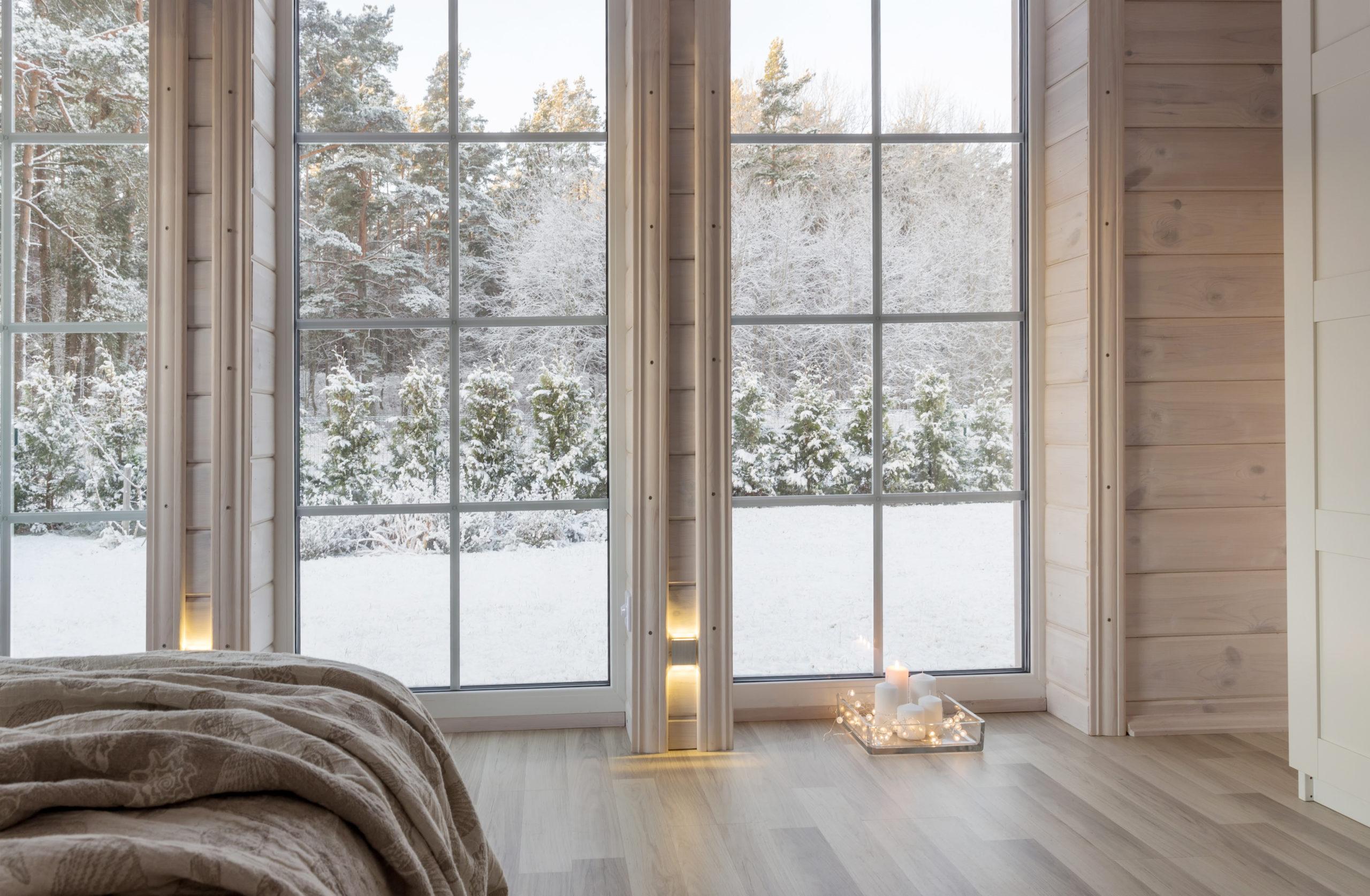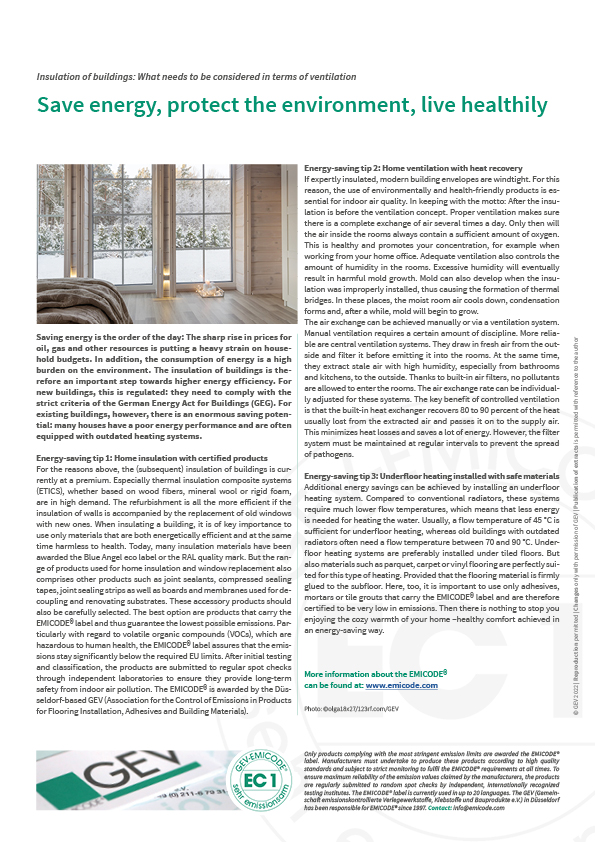Save energy, protect the environment, live healthily
Insulation of buildings: What needs to be considered in terms of ventilation and emissions
Saving energy is the order of the day: The sharp rise in prices for oil, gas and other resources is putting a heavy strain on household budgets. In addition, the consumption of energy is a high burden on the environment. The insulation of buildings is therefore an important step towards higher energy efficiency. For new buildings, this is regulated: they need to comply with the strict criteria of the German Energy Act for Buildings (GEG). For existing buildings, however, there is an enormous saving potential: many houses have a poor energy performance and are often equipped with outdated heating systems.
Energy-saving tip 1: Home insulation with certified products
For the reasons above, the (subsequent) insulation of buildings is currently at a premium. Especially thermal insulation composite systems (ETICS), whether based on wood fibers, mineral wool or rigid foam, are in high demand. The refurbishment is all the more efficient if the insulation of walls is accompanied by the replacement of old windows with new ones. When insulating a building, it is of key importance to use only materials that are both energetically efficient and at the same time harmless to health. Today, many insulation materials have been awarded the Blue Angel eco label or the RAL quality mark. But the range of products used for home insulation and window replacement also comprises other products such as joint sealants, compressed sealing tapes, joint sealing strips as well as boards and membranes used for decoupling and renovating substrates. These accessory products should also be carefully selected. The best option are products that carry the EMICODE® label and thus guarantee the lowest possible emissions. Particularly with regard to volatile organic compounds (VOCs), which are hazardous to human health, the EMICODE® label assures that the emissions stay significantly below the required EU limits. After initial testing and classification, the products are submitted to regular spot checks through independent laboratories to ensure they provide long-term safety from indoor air pollution. The EMICODE® is awarded by the Düsseldorf-based GEV (Association for the Control of Emissions in Products for Flooring Installation, Adhesives and Building Materials).
Energy-saving tip 2: Home ventilation with heat recovery
If expertly insulated, modern building envelopes are windtight. For this reason, the use of environmentally and health-friendly products is essential for indoor air quality. In keeping with the motto: After the insulation is before the ventilation concept. Proper ventilation makes sure there is a complete exchange of air several times a day. Only then will the air inside the rooms always contain a sufficient amount of oxygen. This is healthy and promotes your concentration, for example when working from your home office. Adequate ventilation also controls the amount of humidity in the rooms. Excessive humidity will eventually result in harmful mold growth. Mold can also develop when the insulation was improperly installed, thus causing the formation of thermal bridges. In these places, the moist room air cools down, condensation forms and, after a while, mold will begin to grow.
The air exchange can be achieved manually or via a ventilation system. Manual ventilation requires a certain amount of discipline. More reliable are central ventilation systems. They draw in fresh air from the outside and filter it before emitting it into the rooms. At the same time, they extract stale air with high humidity, especially from bathrooms and kitchens, to the outside. Thanks to built-in air filters, no pollutants are allowed to enter the rooms. The air exchange rate can be individually adjusted for these systems. The key benefit of controlled ventilation is that the built-in heat exchanger recovers 80 to 90 percent of the heat usually lost from the extracted air and passes it on to the supply air. This minimizes heat losses and saves a lot of energy. However, the filter system must be maintained at regular intervals to prevent the spread of pathogens.
Energy-saving tip 3: Underfloor heating installed with safe materials
Additional energy savings can be achieved by installing an underfloor heating system. Compared to conventional radiators, these systems require much lower flow temperatures, which means that less energy is needed for heating the water. Usually, a flow temperature of 45 °C is sufficient for underfloor heating, whereas old buildings with outdated radiators often need a flow temperature between 70 and 90 °C. Underfloor heating systems are preferably installed under tiled floors. But also materials such as parquet, carpet or vinyl flooring are perfectly suited for this type of heating. Provided that the flooring material is firmly glued to the subfloor. Here, too, it is important to use only adhesives, mortars or tile grouts that carry the EMICODE® label and are therefore certified to be very low in emissions. Then there is nothing to stop you enjoying the cozy warmth of your home –healthy comfort achieved in an energy-saving way.

Photo: ©olga18x27/123rf.com/GEV
In order to increase the building’s energy performance, it is recommendable to not only insulate the external walls but also replace old windows and (French) doors. When installing new windows, make sure to use only accessory products such as joint sealants, compressed sealing tapes and joint sealing strips that bear the EMICODE® label to guarantee the lowest possible emissions.

Do You Have Questions?
If you have any questions on certain topics or want to contact us for another reason, please contact us by phone or email.
Phone: +49 (0)211 843 449 – 01
info@emicode.com
Share article on Social Media:
